Do you feel like you belong at work? Here’s why it’s so important for your health, happiness and productivity.
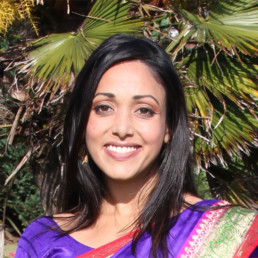
Written by Dr Nilufar Ahmed
Dr Nilufar Ahmed is a multi award winning Chartered Psychologist, Academic, and Accredited Psychotherapist. She works as an academic at the University of Bristol where her research and pedagogy focus on Inclusion and Engagement. Her work is situated in an antiracist and Intersectional framework. She is regularly invited to comment in the media on all things psychology and has delivered training, keynotes, and consultancy services across sectors including HE, business, and Government.
Originally published for The Conversation on May 9th 2024, republished with author’s permission.
We all want to feel like we belong. Psychologists have known this for a long time, describing belonging as a fundamental human need that brings meaning to our lives.
Traditionally, this need was filled by family and community networks. But as society becomes more individualised, with many people moving away from their community and family, the workplace has become an increasingly important source of meaning, connection and friendship.
Many employers know the value of belonging, boasting that their organisation is like a family – a place where everyone is welcome and takes care of each other. But in reality, just being hired isn’t necessarily enough to feel like you belong. Belonging is about feeling accepted and included. This might mean feeling “seen” by your colleagues and manager, and that your work is recognised, rewarded and respected.
Most people want to do meaningful work, and belonging and feeling connected with others is part of this. Meaning in work may come from the job itself – doing something that aligns with our purpose – or from the relationships and roles people create in the workspace. Consider someone who has a (formal or informal) position of offering support to their colleagues. This sense of connection and belonging can make the job feel more meaningful.
Belonging is also good for business. Feeling excluded and lonely can lead people to disengage, negatively affecting their work performance. Surveys have found that over 50% of people who left their jobs did so in search of better belonging, with younger workers more likely to leave.
The exclusion that comes from not belonging can be as painful as physical injury, and feeling isolated can have a range of negative health impacts. In contrast, when employees feel they belong, they are happier and less lonely, leading to greater productivity, fewer sick days and higher profits.
In my role as a psychotherapist, I work with countless people who feel unsupported and alone in the workplace due to direct or indirect discrimination and exclusion. The instinctive response can be to work harder to be accepted and belong – but this can lead to burnout, trying to get the approval that might never come.
The pandemic altered how we think about and engage with work. Some businesses may feel that bringing people back into the office is the answer to building connections and fostering belonging. But the truth is such actions alone could have the opposite effect.
People may withdraw and become less connected in such spaces. Those who prefer working from home may feel unsupported by their workplace if they have to come in to the office to deliver work they can do equally, if not more productively, at home.
On the flip side, for some people, being in the office offers a sense of belonging and connection that can be missing when working from home. Ideally, enabling a balance between the two allows people to benefit from the advantages of both spaces and work in a way that maximises productivity and connection. But it may be some time before employers figure out how to get the balance right.
Finding belonging
Belonging is particularly important to consider as workplaces become more diverse. Workplace discrimination is more likely to be experienced by marginalised groups, and is a major barrier to belonging.
Employees in organisations that are more diverse, particularly in senior leadership positions, are more likely to feel a sense of belonging. Diversity is also related to greater productivity and profitability. But organisations must consider the diversity distribution. While grand statements of inclusion may attract new workers, if the senior leadership team is predominately white and middle class, these statements have little meaning.
For diversity to effectively create belonging, it has to go hand-in-hand with psychological safety. This means that everyone – not just those who share characteristics with the majority or the leaders – feels they have a voice and are listened to. A workplace where people feel nervous about raising concerns, are worried about making mistakes, or feel there is a lack of transparency is one that is lacking in psychological safety.
When people feel unable to bring their authentic selves to work, they may end up performing different identities or codeswitching – adjusting their language – to become more “acceptable” and fit in. These strategies initially help workers create a sense of safety for themselves in the workplace, but can result in exhaustion and burnout.
Creating ways that people can express their authenticity – for example, through employee resource groups such as women’s staff networks – can create a safe space to share with others who have similar experiences in the workplace. For those who are self-employed or work mostly from home, to combat isolation, consider finding online groups or local coworking spaces that mirror the social benefits of a workplace community.
Employees feel more connected with the wider team when their efforts are recognised and rewarded. But this does not have to be through a pay rise or promotion – even an email from a manager can boost someone’s sense of belonging. The more recognition and appreciation for the work we put in, including from our colleagues, the more positive the benefit.
Not everyone has the opportunity to leave workplaces that make them feel unsafe or unhappy. If you are in this position, you can minimise the negative impact by finding connection and belonging outside of work, and reconnecting with people and activities that bring you meaning and joy.
New Official Study Guide for GCSE Set Text Leave Taking by Winsome Pinnock
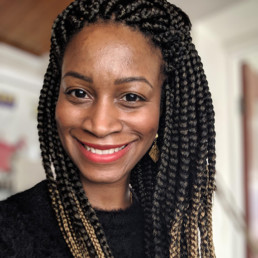
Written by Samantha Wharton
Samantha is a seasoned educator from East London, with ancestral roots tracing back to the Caribbean nations of Antigua and Guyana. She brings a wealth of academic achievements, including a degree in Communications and Media from Brunel University, a PGCE in English and Drama from the Institute of Education at University College London, and an MA in Black British Literature from Goldsmiths University.
A new official study guide for Leave Taking by Winsome Pinnock, authored by educators Samantha Wharton and Lynette Carr Armstrong, brings a fresh approach to GCSE English literature, enhancing the teaching and learning experience for GCSE English Literature students and teachers.
Samantha Wharton and Lynette Carr Armstrong bring a wealth of expertise from over 50 years of combined experience in education. As co-writers of this study guide, they have meticulously crafted an in-depth exploration of Leave Taking, ensuring that it delves into the nuances of the text with precision and clarity.
But what sets this study guide apart is its academic rigour and its authors’ lived experience and insight. As children of the Windrush generation, Samantha and Lynette possess a profound understanding of the worlds depicted in Pinnock’s play. Their lived experiences and living memories enrich the guide, providing readers with authentic perspectives that resonate with the characters and themes of Leave Taking.
Crucially, Samantha and Lynette had the privilege of consulting with Winsome Pinnock herself during the development of this guide. Pinnock’s invaluable commentary is woven throughout the text, offering readers a rare glimpse into the playwright’s mind and enriching their understanding of her work.
Leave Taking is not just another set text—it is a vital piece of literature amplifying Black voices and sharing insights into the Black British experience. Samantha Wharton and Lynette Carr Armstrong emphasise the importance of showcasing these narratives through Black voices with shared experiences. In a world where the Black experience has been historically erased, texts like Leave Taking must be unpacked and explored with sensitivity and nuance.
This study guide is more than just a pedagogical tool—it is a labour of love, insight, and experience. Samantha has taught Leave Taking at St Angela’s School in London, where staff and students have met it with enthusiasm. The diverse cohort of teachers at St Angela’s have thoroughly enjoyed teaching the text, while the students are excited to see modern characters that reflect their own experiences.
The release of the official study guide for Leave Taking by Winsome Pinnock marks a significant milestone in GCSE English literature. With Samantha Wharton and Lynette Carr Armstrong at the helm, educators and students can embark on a journey of discovery that celebrates Black voices, amplifies lived experiences, and enriches the educational landscape for generations to come.
The duo are committed to supporting teachers in implementing Leave Taking into the classroom. They will offer future training experiences, including workshops and seminars, to provide educators with the tools and insights to effectively teach this text. These training sessions will cover various aspects of the play, including thematic analysis, character studies, and classroom activities.
To inquire about future training opportunities or to reach Samantha Wharton and Lynette Carr Armstrong for further information on the study guide, educators can contact them via email at samantha.wharton@gmail.com and Lynettedcarr@hotmail.com. They are eager to collaborate with schools and educational institutions to enhance the teaching and learning experience of Leave Taking. They are available to answer any queries or provide additional support as needed.
The study guide has received recognition from Lit In Colour, a prominent platform championing diverse voices in literature. It was endorsed in their latest newsletter and featured in The (incomplete) Lit In Colour list, a curated collection of essential resources for educators looking to include diverse perspectives in teaching. This recognition reinforces the guide’s reputation as a valuable tool for promoting inclusivity and representation in education, making it indispensable for educators passionate about diversity and equity.
The official study guide for Leave Taking by Winsome Pinnock can be found through various channels. It is available on the Nick Hern Books website, the same publisher as the play, ensuring authenticity and reliability. Furthermore, the guide can be purchased on popular online platforms like Amazon!
The study guide and texts are available here:
https://www.nickhernbooks.co.uk/leave-taking-gcse-study-guide
https://www.nickhernbooks.co.uk/leave-taking-bundle-deal
https://www.amazon.co.uk/Leave-Taking-GCSE-Student-Guide/dp/1839041366
Press coverage about the play:
‘The godmother of Black British playwrights’ – Guardian on Winsome Pinnock
Guardian ‘Three decades since its debut Winsome Pinnock’s pioneering portrayal of the lives of black Britons feels shockingly contemporary… Pinnock was a pioneer and her piece still hits homethrough its often shocking honesty about the hazards facing black people in Britain’
Time Out ‘A devastatingly powerful story of a British-Caribbean family… whyWinsome Pinnock’s play isn’t on the English Literature syllabus is a mystery to me, given its shocking contemporary relevance… this play warms and devastates’
Two generations. Three incredible women. Winsome Pinnock’s play Leave Taking is an epic story of what we leave behind in order to find home. It premiered in 1987, and was revived at the Bush Theatre, London, in 2018, in a production directed by the Bush’s Artistic Director, Madani Younis.
Five reasons why schools should teach Princess & The Hustler at GCSE
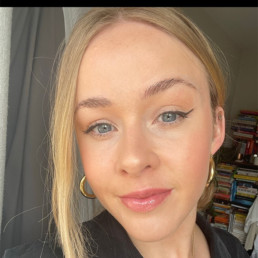
Written by Jessica Tacon
Jessica Tacon is second in charge of the English Department at City of London Academy Highgate Hill and is a member of NATE’s (National Association for the Teaching of English) ‘Reviewing Literature’ working group. She created The Right Writing campaign which aims to improve racial diversity in English Education.
In September 2022, AQA launched ‘Spark something’ to inspire and support English teachers to teach their new set texts. To improve the diversity and inclusion of their English Literature GCSE offer, particularly racial diversity and inclusion, AQA introduced a new novel, My Name is Leon by Kit de Waal, as well as a new poetry cluster and two new plays: Leave Taking by Winsome Pinnock and Princess & The Hustler by Chinonyerem Odimba.
I was lucky enough to be asked by BBC Bitesize to become their lead writer on Princess & The Hustler. This is Odimba’s heart-warming and heart-wrenching story about Princess, a 10-year-old girl, and her family living in Bristol between Christmas 1962 and September 1963. In the play’s opening scene, her father, The Hustler, returns after being away for a long time. Throughout the plot, Princess dreams of being winner of Weston-super-Mare’s Beauties of the West contest; Odimba says that part of her motivation for writing the play was to allow young Black girls to feel “beautiful” as well as “strong and capable”. The story is set against the backdrop of the Bristol Bus Boycott of 1963. At this time, the Bristol Omnibus Company was upholding a colour bar, which meant that they refused to hire Black or Asian bus drivers or conductors. The people of Bristol protested against this racial discrimination by refusing to ride the buses.
After the initial research stage, BBC Bitesize asked me to write revision-focused content for their website on the text. By this point I was already in love with Princess as well as Odimba’s story of family, struggle, and self-love. Below are five (of many) reasons why I believe schools should absolutely be teaching this text as part of the AQA modern text section of the literature GCSE.
Reason 1: Young people need stories about people like them fighting for what they believe in
From early in the play, Wendell Junior, Princess’ older brother, is a devoted fighter of the cause of the Bristol Bus Boycott. He attends marches and speaks passionately about the need for change. Young people are the future, and this important aspect of the story can remind them just how much power their voices and actions can have.
Reason 2: The play communicates important lessons and messages
The play, in very nuanced ways, teaches important lessons that will genuinely help students to understand themselves and to navigate the world around them. One example is the colourism that Princess experiences throughout the book which is often very subtle. There is an instance where her lighter skinned half-sister, Lorna, is invited to a birthday party by a girl at school, but she is not. Odimba does not explicitly point out that this is the reason why Princess is not invited, but the reader is encouraged to infer this through careful hints. This is an important lesson about how prejudice and discrimination are often insidious. However, this in no way means that these instances are any less harmful. This will show students that not all prejudice has to be explicit and obvious to be wrong and painful.
Reason 3: The historical events are part of England’s history
Princess & The Hustler sheds light on a very important period in England’s history. It absolutely should be taught in a specification which aims to help young people to “appreciate the depth and power of the English literary heritage”.
Heritage does not happen and is not learnt about in a vacuum; teaching texts about England’s heritage, whether showing aspects of the country in a good or bad light, are an asset to achieving the aforementioned aim.
Reason 4: The play covers a variety of themes
I was reluctant for any of these reasons to be about the exam itself. However, of course, it would be somewhat irresponsible to teach texts to students at a GCSE level with no consideration as to how it will help them to succeed in their exams (and, in lots of ways, consequently their future). That said, Princess & The Hustler covers a variety of themes that offer opportunities for students to analyse in detail. Themes like family, love, conflict, prejudice, and power are all richly peppered and embedded throughout. Diversity has become somewhat of a buzzword. And yet, this play alone offers true diversity in the sense that in such a small story it covers so much.
Reason 5: Young people need stories about self-love
We are living in a world of social media and, heartbreakingly, growing numbers of mental health issues among teenagers. It seems necessary here to celebrate the fact that at its very core, this is a story about a girl who, against a lot of external barriers, learns to love herself.
Mavis, Princess’ mum, says to her when she is struggling with her self-image:
“Phyllis James you listen, and you listen good!//Whether your hair long or short. Skin good or bad.//Us…//Us…girls and women with our skin dark as the night, every shade of brown, glowing like fresh-made caramel, or legs spindly like a spiders we are everything that is beautiful on this earth.//And you…you the prettiest of them all because you are my girl”.
I think we can all agree that this is absolutely beautiful advice for young people to be exposed to.
For more information about the BBC Bitesize revision resource to accompany Princess & The Hustler, please visit www.bbc.co.uk/bitesize
Using stories and voices to combat the narrative of antisemitic hate: opportunities afforded by the Curriculum for Wales.
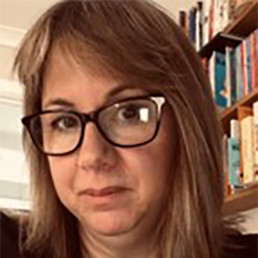
Written by Jennifer Harding-Richards
Jennifer is currently on secondment working as RVE and RSE adviser to schools across three local authorities as well as RVE adviser to the SACRE’s in each of the three authorities. She is passionate about education and especially keen on ensuring that social justice and equity are at the heart of all RVE and RSE curriculum planning, development and pedagogy within the Curriculum for Wales. She is the RE Hubs lead for Wales and a member of the steering committee for the Welsh Jewish Heritage Centre. She has previously worked as a freelance educator for the Holocaust Education Trust and has an MA in World Religions.
According to a recent report (ref 1), there were three times the numbers of antisemitic incidents reported across Wales in 2023, compared with 2022. The incidents which included threats, abusive behaviour and assault, represent a rise of 338%.
Wales is the first, and so far, the only home nation to have made the teaching of Black, Asian and Minority Ethnic histories a mandatory element of their curriculum and are committed to being an anti-racist nation by 2030. The anti-racist action plan (ref 2) includes the vision, values, purpose and strategies needed to support this and understandably, education has a large role to play.
The Curriculum for Wales, introduced in 2022, empowers individual schools to craft and cultivate their own unique curriculum. The aim of each school’s curriculum is to nurture students who are:
- ambitious, capable learners, ready to learn throughout their lives
- enterprising, creative contributors, ready to play a full part in life and work
- ethical, informed citizens of Wales and the world
- healthy, confident individuals, ready to lead fulfilling lives as valued members of society.
As we work towards an anti-racist nation, we are reminded about the power of education. Nelson Mandela’s infamous quote ‘education is the most powerful weapon with which you can change the world’ really resonates with the vision that we have in Wales. We know that far-right philosophies and beliefs are infiltrating mainstream culture, and our children are intoxicated with the images, speeches and behaviour of those that preach such ideologies. As educators, we have the responsibility to counteract such narratives and use our privileged position as curriculum designers and teachers to support our learners to become ethical and informed citizens, able to not only take their place within our diverse society, but to contribute and make positive change.
Wales has a rich, diverse and multi-cultural history. We have a rich legacy of inclusive education as well as a welcoming acceptance for the many diverse cultures and followers of faith that have made Wales their home. The story is told of how some of the first Jews in Wales, arriving in Merthyr Tydfil in the eighteenth century, peered through the windows of some local homes, and on seeing a Bible in every one, decided that this was a place where they could stay and be welcomed.
Using Welsh Jewish stories and voices within our school curricula, whilst obviously not eradicating antisemitism in its entirety, will help develop a generation of young people who are able to humanise and personalise others, avoiding stereotypes and challenge the narrative of the media and those with the loudest voices. We want our children to become ethical and informed citizens, capable of independent thought and able to critically engage with the toxicity of hate that surrounds us on a daily basis.
There are so many Welsh Jewish stories that deserve to be told, individuals who have helped shape our society and made a positive impact on others. Leo Abse, for example, a social reformer, and Labour MP for 30 years. He was influential in the shift in laws and norms towards the acceptance of homosexuality and divorce. We want our pupils to engage with discussion around his ideals and values and how they have changed Wales for the better. His aunt, Lily Tobias, had a multilingual childhood in Ystalyfera which fostered in her a political activism, a sense of social justice and a determination to try and change the world. Her legacy cannot ever be underestimated. Kate Bosse Griffiths, escaped Nazi Germany and along with her husband, became a founding member of ‘Cylch Cadwgan’, an organisation that welcomed and celebrated writers, poets and pacifists. Her own writing focused on her feminist ideals and sense of spirituality. She made a huge difference to those around her.
In working towards an anti-racist Wales, in celebrating and recognising cynefin (ref 3) and using our subsidiarity and autonomy to design our own bespoke curriculum for our learners, we have a real opportunity to use stories and voices to challenge stereotypes, antisemitic tropes and narratives of hate.
References
‘We’ve not seen this since the Holocaust’: Antisemitism in Wales up by 300% after outbreak of war:
Anti-racist Wales Action Plan
https://www.gov.wales/anti-racist-wales-action-plan-contents
‘cynefin’
A Welsh word for which there is no direct translation. It refers to the ideas of habitat and a sense of rootedness, It describes the environment in which one is naturally acclimatised.
Does AI promote Equity, Diversity, and Inclusion?
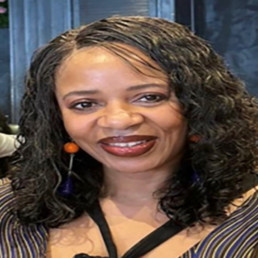
Written by Caroline Anukem
Caroline Anukem is Equity, Diversity and Inclusion Lead at Beaconsfield High School in the UK. She is a driving force, a change-maker, and a relentless advocate for equity.
As the new term is upon us, it is essential to delve into a topic that has been sparking conversations and debates across various sectors; artificial intelligence (AI). With its rapid advancements and widespread use AI has become both a revolutionary tool and a subject of scrutiny. In this piece I will particularly focus on its potential impact on equity, diversity, and inclusion (EDI).
The Rise of Artificial Intelligence: Can be defined as a “Double-Edged Sword”
In recent years, AI has emerged as a powerful tool that promises to revolutionise industries and transform the way we work and live. From predictive analytics to natural language processing, AI technologies offer unprecedented capabilities to automate tasks, analyse vast amounts of data, and even simulate human-like behaviours. As a result, AI has found applications in diverse fields, from healthcare and finance to marketing and entertainment.
However, in parallel with the transformative potential, AI also raises significant ethical and social concerns. One of the most pressing issues is the perpetuation of biases and inequalities within AI systems. Despite the promise to be objective and impartial, AI algorithms often reflect and amplify the biases present in the data they are trained on. It is important to recognise that artificial intelligence does not account for representation and definitely has its own biases. It is fair to say that most artificial intelligence programmes draw its answers from existing information on the internet which we all know is heavily skewed towards a white, male, privileged voice. What this means is that there are ultimately gaps in how ‘diverse’ or ‘inclusive’, or well-balanced, its conclusions are. The results will ultimately produce discriminatory outcomes, reinforcing existing inequalities and marginalising already underrepresented groups.
The Biases Embedded in AI Systems
The biases embedded in AI systems are evident on several layers and thus pervasive, reflecting the biases inherent in society at large. For example, AI algorithms trained on biased datasets may exhibit racial, gender, or socioeconomic biases, leading to discriminatory outcomes in areas such as hiring, lending, and criminal justice. Similarly, AI-powered recommendation systems may reinforce stereotypes and narrow perspectives by promoting content that aligns with dominant narratives and preferences.
Moreover, the lack of diversity in the development and deployment of AI technologies exacerbates these biases. The underrepresentation of women, people of colour, and other marginalised groups in the tech industry means that AI systems are often designed and implemented without sufficient consideration for diverse perspectives and experiences. As a result, AI technologies may inadvertently exclude or disadvantage certain groups, serving to further perpetuate inequalities and hampering progress towards equity and inclusion.
The Importance of Addressing Bias in AI
Addressing bias in AI is not only a matter of fairness and social justice but also essential for ensuring the effectiveness and reliability of AI systems. Biased AI algorithms can lead to inaccurate predictions, unjust outcomes, and diminished trust in AI technologies, undermining their potential to drive positive change and innovation.
Moreover, the consequences of biased AI extend beyond individual experiences to societal structures and norms. By disseminating stereotypes and reinforcing inequalities, biased AI systems contribute to systemic injustices and sabotage efforts to create a more equitable and inclusive society.
Strategies for Promoting Equity, Diversity, and Inclusion in AI
To mitigate bias in AI and promote equity, diversity, and inclusion, rigorous intentional efforts are needed at every stage of the AI lifecycle, from data collection and algorithm design to deployment and evaluation.
Some strategies for facilitating and embedding EDI in AI:
Diversifying Datasets: It is essential to ensure that AI training datasets are diverse, representative, inclusive and reflecting a wide range of voices and experiences is essential for reducing bias in AI systems.
Increasing transparency and accountability in AI algorithms can help identify and address biases and ensure that AI systems are fair and equitable. Integrating ethical considerations into AI development processes, such as fairness, accountability, transparency, and privacy (FATP), can help mitigate bias and promote responsible AI innovation.
Inclusive Development Teams: Promoting diversity and inclusion within AI development teams will bring about diverse perspectives to the table and help identify and address biases in AI systems.
Community Engagement: Engaging with stakeholders and communities affected by AI technologies will help ensure that AI systems reflect their needs, values, and aspirations.
Continuous Evaluation and Improvement: Regularly evaluating AI systems for bias and fairness and implementing corrective measures as needed is crucial for promoting equity and inclusion in AI.
As a baseline, implementing some of these strategies and encouraging collaborations across disciplines and sectors, will work towards creating AI technologies that are truly equitable, diverse, and inclusive, and yoke the transformative potential of AI to build a better future for all.
In Conclusion
As we work through the complex intersection of AI and EDI, we cannot downplay the profound implications of biased AI systems and the importance of promoting equity, diversity, and inclusion in AI development and deployment. During the COVID-19 pandemic, the use of algorithms to determine grades is another example of the pervasive impact of bias in education assessment. By addressing bias in AI and committing to a culture of inclusivity and accountability, it will be possible to harness the full potential of AI to drive positive social change and build a more just and equitable world for generations to come.
What are your thoughts on the intersection of AI and EDI? Share your insights and experiences with. Let’s continue the conversation and work towards a future where AI truly reflects and serves the diversity of human experiences.
#AllTheThings
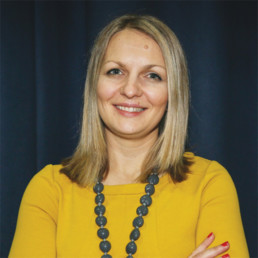
Written by Helena Marsh
Helena is a WomenEd co-founder, mum of three and experienced school and Trust leader. In her ninth year of secondary headship, Helena has also held the role of MAT CEO. An advocate of flexible working, Helena co-wrote the ‘Flexing our Schools’ chapter in the first WomenEd book and has been an active supporter of the Flexible Working Ambassador Scheme and the MTPT Project.
Spending the day among some incredible inspiring women at the ‘Breaking the Mould’ event on 9th March at Milton Road Primary School, Cambridge, was a fabulous way to mark this year’s International Women’s Day.
Hannah asked me to contribute to the event when we met for an after work mocktail in May 2023. At the time, having this little spot of feminist joy to look forward to on the horizon really uplifted me at a particularly bleak moment in my leadership career.
Several months later, I was not disappointed. Featuring amongst a programme of kick-ass women gave me a real sense of personal and professional rejuvenation.
My session, entitled ‘What’s the point of cake if you can’t eat it?’, focused on my experiences, as a mum of three, of gendered perceptions of leadership. In my 15 years as a senior leader, I’ve been conscious of women stepping away from the profession, and their leadership potential, citing selfishness and a pragmatic need to focus on their families, as the reason.
To coin a phrase by Summer Turner, I questioned: ‘Are the boys also worrying about this?’ Do men perceive becoming a dad and maintaining their career as ‘having it all’?
Gender pay gap research reveals that they don’t. The Fatherhood Bonus, in stark contrast to the Motherhood Penalty, rewards men for becoming fathers. While women are stepping down or away to focus on caregiving and accepting the inevitability of this pause/permanent freeze in their professional journey, men are, statistically, enjoying promotion and pay progression when starting a family.
My presentation focused on the factors, institutional, societal and personal, that lead to women feeling as though progressing professionally is not a viable choice once becoming a mum. I concluded that wholesale changes to sector expectations of leaders is necessary. As Jill Berry wisely observes, if having a job and a life isn’t achievable, there’s a problem with the job.
The other inputs to the day complemented this theme. Particularly Niamh Sweeney’s rousing cry to tackle the injustices within the profession that inhibit and preclude. Niamh’s anecdote from her recent trip to the States chimed with many of us in the audience. The audacious goal of winning ‘all the things’ spoke to a refreshing cultural ambition. Meanwhile, many of the other talks highlighted the importance of acknowledging feminine leadership traits and valuing the benefits of diversity in leadership teams.
I left the day reflecting on how often ‘having it all’ is misunderstood for ‘doing it all’. My Mother’s Day stash of gifts that I received the following day from my little ones included various iterations of listing pads. As a fan of organisational stationery, I was chuffed with my haul. However, it did make me recognise how much of my sense of success as a mum and leader is measured through my accomplishment of ‘stuff’. Many women that I have worked with pride themselves on getting all the sh*t done and to an exceptional standard, often at the expense of their personal health and wellbeing.
As I acknowledged in my IWD talk, the weight of the mental load that mums carry, let alone mum leaders carry, is immense. It’s important that having #AllTheThings doesn’t necessitate us doing everything but having our fair share of whatever it is we strive for, whether that’s cake, career development opportunities or childcare responsibilities.
Should schools provide prayer spaces?
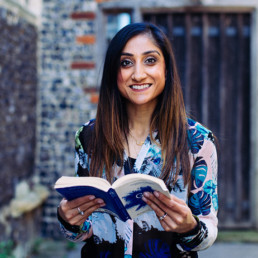
Written by Zahara Chowdhury
Zahara is founder and editor of the blog and podcast, School Should Be, a platform that explores a range of topics helping students, teachers and parents on how to ‘adult well’, together. She is a DEI lead across 2 secondary schools and advises schools on how to create positive and progressive cultures for staff and students. Zahara is a previous Head of English, Associate Senior Leader and Education and Wellbeing Consultant.
The recent High Court decision, ruling in favour of headteacher Birbalsingh’s decision to ban prayer spaces has created quite the media storm. The decision has raised concerns about the precedent it sets for schools creating safe spaces for students and staff, Muslim students and staff in particular. It has also raised conversations about what schools are for and how schools and workplaces can fulfill their obligation to adhere to the Equality Act and The Public Sector Equality Duty – and how they can get around it too.
The responses to the verdict reveal that we live in a society and online world in which Islamophobia and anti-Muslim hate is increasing; whilst we have ‘come a long way’ in overcoming Islamophobia since 9/11, a high court ruling like this makes me wonder if we’ve made any difference at all to the safety of Muslims for future generations? The verdict also reveals the disconnect that exists within the school system itself: we have some leaders who are not interested in creating unity and understanding within a diverse country – yet at the same time they ‘tokenistically’ take pride in multiculturalism too. And, we have other leaders in education giving us hope, embedding inclusive and equitable practices in everyday school life. I find it baffling that a simple question about prayer spaces ends up at the gates of a High Court. To me, this not only reveals a lack of unity and understanding in a school but also an absence of a critical skill that should be at the centre of schooling: listening.
Many educators and commentators have been sharing their concerns and outrage about the decision. It will also concern parents and students who regularly use prayer spaces in schools, maybe even at work (many teachers use prayer spaces too). It’s a disappointing decision and whilst several anti-woke keyboard warriors rejoice at the ruling, we cannot let it set a precedent for schools – and I don’t think it will. Schools absolutely should provide prayer spaces and they will continue to provide such safe spaces for students – it’s quite simply common sense. For this blog, examples and explanations are practical and experiential, based on what life is like ‘in school’. Whilst research and data are important, progress, collaboration and community cohesion are also nurtured by listening to the candid, lived experiences of staff and students in schools.
Time and space to pray
In line with the Equality Act, allowing students and staff to pray is reasonable and proportionate to a school and working day. It is comparable to allowing students to have break times, music lessons and god-forbid, toilet breaks. Different forms of prayer and spiritual practice are a part of nearly every faith. In Islam, praying 5 times a day is an integral part of the faith. It takes 5-10 minutes to pray. For the duration of that time, a prayer mat takes up just as much space as a two-seater desk. Depending on the time of year, prayer usually fits into a lunchtime. Just as schools host extracurricular clubs, music lessons sports fixtures and more, prayer can usually fit into this time too. It is not a big ask and it is not disruptive.
Some schools may have a designated prayer room, which is great. Other schools may allocate a classroom, usually near a space where a teacher is ‘on duty’ anyway; the last time I checked, prayer doesn’t require back flips, cartwheels or balancing on one’s head…the health and safety risks are fairly manageable. Some schools might even say, ‘if you need to pray and you have what you need with you (prayer mat, head covering, beads, holy book etc…), feel free to use a designated safe space. It does not need to be complicated.
Prayer spaces are not the problem
To blame prayer and collective worship for peer pressure and bullying is deflecting from the real problem. If children start praying as a result of seeing others pray, or if they simply observe with questions and curiosity, why is this such a problem? If they find it to be a positive experience, surely that can only be a positive learning experience. If the opposite happens, it’s not necessarily a problem either. Rather, it’s a teachable moment and reveals hostile attitudes any school should be aware of. Knowledge about the prejudices within our communities is the first step to safeguarding young people in education. ‘Cancelling’ or banning prayer spaces is not.
‘Banning’ or ‘cancelling’ (on and offline) doesn’t work. It is a power-based behaviour management tool fuelling a notion that education is based on ‘controlling the masses’. We all learn through conversation, discussion, listening, knowledge, understanding, boundaries and respect, not necessarily in that order. By no means are any of the latter ‘easy’ to achieve, but from working with teenagers I’ve found they’re open to a heated debate, discussion, learning, understanding and compromise.
School is a place of work and I’m not sure why we expect teenagers to just abide by ‘yes and no’ rules with little to no explanation. Plus, if they find a reasonable solution (like praying in a classroom for 10 minutes at lunchtime), what’s the big deal? Secondary school students are a few years away from further education and the workplace, which we all know thrives on innovation, creativity and autonomy. In this case, a blanket prayer ban in a school (their current place of work) completely contradicts the 21st century workplace they will inhabit. It doesn’t make sense.
‘It’s inconvenient: we don’t have time to police prayer spaces’
Like any theory of change, whether that be introducing a mobile phone policy or changes to a uniform policy, navigating any arising teething issues (by students, parents and the community), takes time and flexibility. None of this is impossible if it is built firmly into the school culture, relevant processes and policies. These policies and processes may be safeguarding, anti-bullying, behaviour management and curriculum. All of the above are part of a teacher’s and a school’s day-to-day functions; navigating prayer spaces is no different to introducing a new club or curriculum change. Plus, we somehow managed bubbles and one-way systems post-lockdown…I think schools are pretty well equipped to create a prayer space for all of a matter of minutes in a day!
Prayer is not ‘an add on’
Faith is observed differently, from person to person. It is a way of life, and an ongoing lived experience; for some it is an integral part of their identity and for others it is their identity. Prayer is a major part of several religious practices. Like some people are vegan and vegetarian, prayer is not just a choice and something to switch on and off – it is an intrinsic part of an individual’s life. Some individuals, as far as they possibly can, plan their days, weeks, holidays and more around prayer. Not only is it a religious obligation, it is also a source of wellbeing and peace. In a time where health and wellbeing are paramount in education, denying prayer spaces seems counterintuitive. Enabling some form of space (like we do options on a menu) for individuals to pray is a minimal request and something schools can do with minimal disruption. However, if cracks in the system are revealed and outrage spills online and at the High Court, there are bigger questions and concerns to address.
Schools don’t need to be ‘impossible’ or difficult spaces – and they shouldn’t be made out to be like this either. One high court ruling does not define the state of schooling in the UK. I have too much respect and experience (or maybe good fortune) of working in schools that enable, or at the very least, welcome conversations around inclusion, safety, flexibility and authenticity. None of the latter disrupts mainstream education and a student’s chances of attaining a grade 9. However, many other things do and those are inequitable opportunities, ‘belonging uncertainty’ (Cohen, 2022) and denying the identities of the young people we teach.
Why are we still denying part time and flexible working to those in leadership roles?
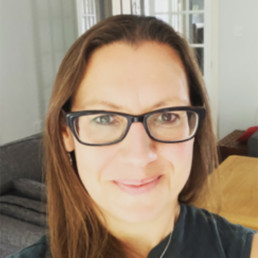
Written by Maz Foucher
Maz is Regional Representative for the MTPT Project in Devon and a former Assistant Headteacher and KS2 lead, based in Devon. Having juggled full time teaching, school leadership and parenting, she has a great understanding of the challenges faced by those with a young family. After moving on from school-based roles, Maz studied for an MA in Education Leadership specifically researching teacher retention, and now works in education publishing.
While researching teacher wellbeing and retention, I have often come across the suggestion that working part time or flexibly aids both the wellbeing and retention of staff. However, I have also found that this is still not an option available to many of those working at a leadership level, so let’s look at the facts.
24% of employees in the UK work part time and these are primarily women (ONS, 2022). This is echoed within the teaching profession, also at 24% (School Workforce Census, 2022). However, while the education profession is predominantly female, fewer women work part time in education (29% – School Workforce Census, 2022) compared to the overall UK labour market (36% – ONS, 2022). Additionally, when compared to different age ranges and genders, it is most likely that those working part time are women between the ages of 30 – 39 (ONS, 2022) This coincides with the age where many women start a family, and this is also the demographic most likely to leave teaching entirely (DfE, 2022).
If we look more closely at the 24% of teachers working part time, when this is broken down by role we can see that:
- 26% of class teachers work part time
- 11% of deputy heads work part time
- 6% of headteachers work part time.
(School Workforce Census, 2022).
It is clear from these statistics that, of the women in education who are working part time, the vast majority of these are not doing so at a senior leadership level. This could mean that they have decided for themselves that leadership is incompatible with part time working and parenthood. However, these statistics could also indicate that these women are not being encouraged, supported or allowed to work in senior leader roles part time. Indeed, despite ongoing headlines about the benefits of flexible and part time work, there are many schools and trusts who persist with a policy of no flex/part time at leadership level.
It could be said that it is preferable for leaders to work full time. The need for leaders to be present to deal with staffing, behaviour and safeguarding issues is a very real and relevant argument. From my own experience, I know that when headteachers and senior leaders are not present, it can lead to additional pressures on those within middle leadership roles. In a profession where 78% of school staff are experiencing stress (Teacher Wellbeing Index, 2023), it could be argued that exposing staff to additional pressures that they are not paid/contracted to handle is counterproductive.
Additionally, employers are within their rights to deny flexi and part-time working requests if they can prove that these will hinder business outcomes. In the case of education, I have heard arguments that part time leadership can impact on the smooth running of the school, its pupil outcomes, Ofsted ratings and pupil numbers, especially if parents consider leadership to be inconsistent and therefore chaotic.
However, there are also many positives to having leaders work flexibly or part time. And given that women, particularly those in the 30-39 bracket, are most likely to request this sort of contract, the all-too-common policy of no flex/part time options at a leadership level could also be seen to be seriously disadvantaging aspirational women in education, forcing them to choose between their family and their career. Is not uncommon to see female education leaders step back from these roles, leave teaching entirely or indeed find themselves demoted, when family commitments require them to reduce their hours at work.
The first question this raises is how valued these women feel within the workplace when their experience and expertise is suddenly overlooked once they become a mother and are no longer available for full time hours. I’ve heard this described as ‘Your skills are only valued if you’re there full time.’ I know many who suddenly feel like their level of competence or their commitment to their school is in question, made to feel like a burden on their workplace, that they are workshy or lazy if they can’t work in the same way that they could before motherhood. This additional pressure could be a catalyst for why these women often end up leaving education entirely. While there are many inspirational female teacher-parents who are forging the way forwards in leadership roles, it is clear from the data that very few mothers are finding that the workload, the pressure, their school’s policies and their own family set-up are allowing them to do this full time.
With all this in mind, if we also consider the persistently huge gender pay in education – the third worst across all sectors at 20.4% (BBC, 2023) – alongside the knowledge that women who are mothers are the demographic who are most likely to ask for part time work, we can begin to see how the policies which do not allow part time and flexi working at a leadership level are in fact indirectly discriminatory towards women. When we know that it is illegal to discriminate against the protected characteristics of sex and maternity/pregnancy (Equality Act, 2010), it begs the question as to how long it will be before cases of this nature end up in court?
Personally, I have often said that the teaching profession is full of intelligent and creative people who should be open and willing to rethink how we organise the workforce. Retention is always a better and cheaper option in the long run than recruiting and retraining new staff. In a teacher retention crisis, where we desperately need our experienced teachers to remain in the workforce to support and mentor the new teachers we require, we must celebrate and share examples of where flexible or part time working at a leadership level is proving to be a successful strategy for retention. There are many schools and trusts out there who are able to retain aspirational women at all levels of the profession when they become mothers by supporting them to work PT or flexibly. Imagine a world in which a mother returns to the profession with the conviction that they are still a very valued and an integral part of the workforce, even if they can only commit to part time work? Isn’t this better than losing them from the profession entirely?
Diversity in the Curriculum: The Vital Role of SMSC Subjects
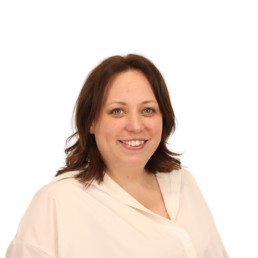
Written by Laura Gregory-White
Laura is an RE Regional Advisor for Jigsaw Education Group. She has over 15 years experience as an educator and curriculum lead across Primary and Secondary.
In today’s pluralistic society, where diversity is a fundamental part of who we are, conversations around diversity in schools and the curriculum are increasingly important. Subjects like Religious Education (RE) and Personal, Social, Health, and Economic Education (PSHE) are vital tools in our curriculum offering. Investing in these subjects, invests in our children and young people’s successful development of the skills and knowledge that help to navigate the complexities of our diverse world with empathy, understanding, and a commitment to social justice.
In Primary schools, where all the teaching staff will have an impact on curriculum development, it is crucial that we are giving them the necessary time and expertise to enable this. From the teachers developing and delivering the individual lessons, the subject leads with oversight for the entire curriculum journey, to the senior leaders who set the values that underpin curriculum design within a school. We all share the responsibility of designing curriculum that not only imparts knowledge but fosters a sense of belonging and inclusivity preparing our children to become global citizens. This journey begins with a deliberate and conscious approach to curriculum design. Every decision we make, from the voices we amplify to the resources we use, must reflect the diversity of human experience.
When facilitating discussions with RE subject leads on this topic, we speak about the implicit and explicit features of the curriculum. The implicit being those decisions we make as curriculum designers about what we include and represent. It means asking ourselves critical questions: What perspectives are included in our syllabi? Whose voices are being centred? Are we offering a diverse range of representation? These considerations extend beyond the mere content of our subjects; they seep into the language we use, the images we present, and the values we share. These decisions may not be explicitly obvious to the children in our lessons, but it frames a journey for them that better represents the world they are growing up in. Without this careful consideration, we can unintentionally establish an unconscious bias or reinforce stereotypes.
Alongside these implicit considerations is the explicit curriculum, where we dedicate time in lessons to directly address issues of diversity, equity, inclusion, justice, and belonging (DEIJB). It’s about more than just ticking boxes; it’s about fostering meaningful dialogue, challenging biases, and nurturing a culture of respect and understanding. SMSC subjects provide the structured opportunities for students to explore complex societal issues, interrogate their own beliefs and biases, and develop the critical thinking skills necessary to navigate an increasingly interconnected world. For staff to feel confident in leading these discussions, we need to support the ongoing development of their knowledge and understanding of these issues as well as the ways in which safe learning environments can be established, and discussion and debate can be managed. This will support them in feeling confident to plan in these explicit curriculum opportunities for our children.
This is not a small job or short conversation with a defined end point. This is ongoing work, and it should be contextual. It is important that schools support their staff to engage with this through investment in high-quality resources, providing the time and opportunity for evaluation and review, and dedicating time to ongoing learning and development for staff.
In a world dominated by technology, AI, and algorithms, education needs to do more than impart knowledge. It must nurture empathy, compassion, and a sense of collective responsibility. To achieve this, we must elevate and enhance subjects like RE and PSHE. They are essential components of a well-rounded education that prepares students to navigate the complexities of the modern world.
Reflecting on Privilege and Pupil Premium
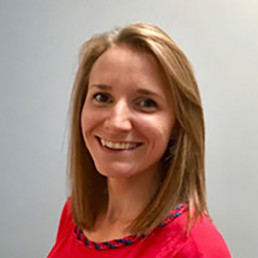
Written by Gemma Hargraves
Gemma Hargraves is a Deputy Headteacher responsible for Safeguarding, Inclusion and Wellbeing.
I recently attended a national Pupil Premium Conference in Birmingham. The first speaker asked for people to raise their hands if they have personally experienced poverty – I have not, so I did not raise my hand. The number of people who did was striking. I was reminded of my experience at Bukky Yusuf’s session at the first Diverse Educators conference when we were asked how many boxes we tick in terms of diversity. I am very aware of my luck, my privilege, and whilst my father would have proudly proclaimed his working class roots he made sure I had a comfortable upbringing never wanted for anything.
Spending the day surrounded by educators who care deeply about supporting students and families eligible for Pupil Premium I was struck by the need to get to know these students at my school better. Since joining the school in September I know some very well, for various reasons, but others I have not met yet. Sean Harris’s keynote was compelling about rewriting the story of disadvantage in schools and communities.
We cannot assume all students in receipt of Pupil Premium funding face the same challenges. When I say “we” I mean myself, as Deputy Headteacher in charge of Pupil Premium strategy, but all teachers and staff in schools. Vital here are Form Tutors who see the students every morning and offer a caring and consistent welcome. Also, Receptionists, canteen staff, all teachers and leaders in schools. “We” here should also mean policy makers – those who decide who qualifies for Pupil Premium, and Service Pupil Premium, and who doesn’t but who also need to be supported (of course this is all students but I am especially thinking of those who are only just above the Pupil Premium qualifying line, disadvantaged sixth formers, of young careers, of others with additional needs). We must all endeavour to know these pupils as individuals and to give them opportunities to shine.
There are practical and logistical challenges of course. Schools Week this week reported that school will have to wait until May to find out their pupil premium funding allocations for 2024-25. The data was supposed to be out in March but had been hit by a ‘problem’ with identifying eligible reception pupils. This clearly makes it more challenging for schools to budget and perhaps recruit but we just not lose sight of the children affected. Similarly, when focusing on outcomes, Progress 8 or some other measure we must remember there are individual students and families behind these numbers.
Of course, our approach must be intersectional. A child is not only “Pupil Premium” they may also be a devout Muslim, disabled, a child of LGBT+ parents or indeed all or none of these but we will only know and be able to celebrate this if we get to know the pupils and families better. We must find funds to support them in ways they need, not what we assume will be generically helpful.
And while literacy is of course important and key to probably every Pupil Premium strategy, and improving educational outcomes can be transformative, we must also focus on cultivating a sense of belonging, confidence and joy. I’ve been doing a lot of work on inclusion, diversity and belonging in schools over the past few years, but this conference gave me a renewed focus on poverty and inequality. In the spirit of pledges from previous WomenEd and DiverseEd events, I am now committing to spend more time reading, thinking, and researching about poverty and inequality in my community but also, of course, getting to know the students and families so they can truly flourish.

